Celebrate Women Artists: Neysa McMein
Born in Illinois as Marjorie McMein, this cover artist left the Midwest, changed her name to Neysa, and turned herself into the quintessential New York woman. McMein was modern and independent; she fought for women’s right to vote and worked overseas during World War I creating posters for the U.S. and French government. Back in New York, she lived above Carnegie Hall where she held parties for her friends, many of whom were famous, including Irving Berlin, Charlie Chaplin, Dorothy Parker, and Richard Rodgers.
McMein was most famous for her portraits, and painted presidents Warren Harding and Herbert Hoover. Her portrait illustrations were drawn for magazines and advertising; McMein even drew the first Betty Crocker illustration for General Mills in 1936, launching the brand. Her work for magazine covers, including McCall’s, Collier’s, and 60 covers for The Saturday Evening Post, portrayed young women of the 1920s as we picture them today, stylish and full of life.
Known for her portraits, McMein stuck with what she knew for her Post covers.

Neysa McMein
November 11, 1916
Before you think this is a portrait of Amelia Earhart, know that she didn’t get her pilot’s license until 1923. McMein’s young aviator captured the possibilities for women pilots, who only just began flying in 1910.
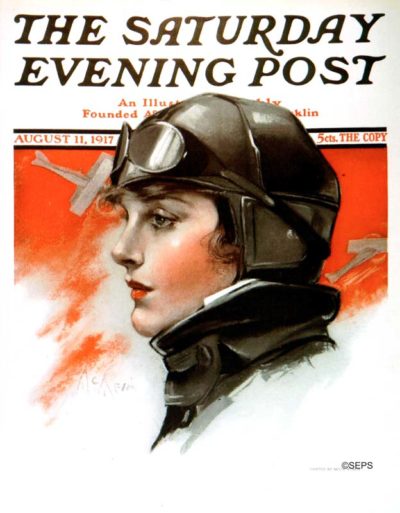
Neysa McMein
August 11, 1917
While the model looks forlorn, her dress is amazing. The details McMein drew include sheer sleeves with rosettes on the end and a flowing skirt. You can almost see each individual layer of fabric.
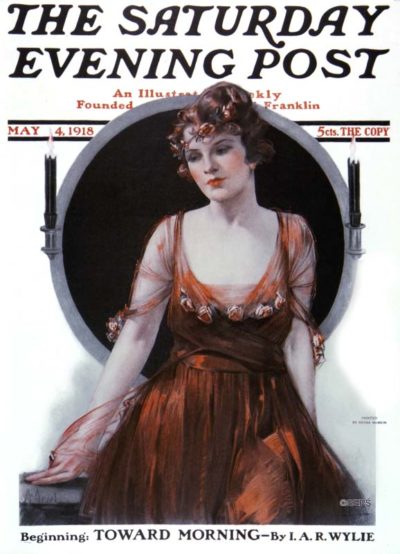
Neysa McMein
May 4, 1918
The U.S. ratified the 19th Amendment on August 18, 1920, giving women the right to vote. McMein, a long-standing suffragist, helped the Post be ahead of history when this cover published March 6, 1920.
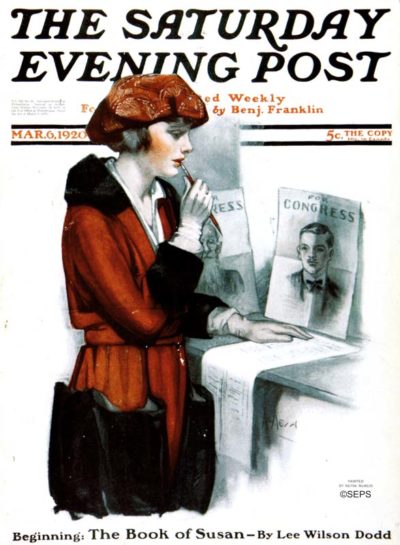
Neysa McMein
March 6, 1920
This young woman perfectly captures the Bohemian look of artists in the 1920s.
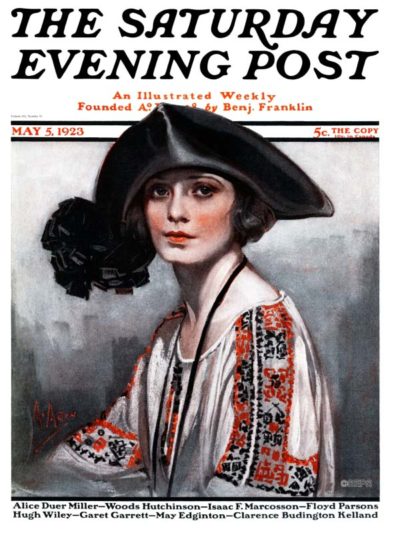
Neysa McMein
May 5, 1923
The pillbox hats this duo is sporting were brand new in the 1930s. Since then, celebrities Jacqueline Kennedy and Catherine Middleton have brought the look back in fashion time and again. In this particular style showdown, who wore it best?

Neysa McMein
March 26, 1938
No other McMein cover includes the bright purple and teal seen in this dress thanks to changes in printing. The Post began issuing four-color covers in 1926, giving artists more color options to use in their paintings.

Neysa McMein
May 21, 1938
One of McMein’s last covers for the Post features many aspects from her previous work. It is a woman’s portrait with a scene around her and detailed clothes. If you look closely, you’ll see the coat is made entirely of fur.

Neysa McMein
December 3, 1938
Celebrate Women Artists: Sarah Stilwell-Weber
Sarah Stilwell-Weber was one of The Saturday Evening Post’s most sought after artists. She even turned down Post editor George Horace Lorimer’s offer to have regularly scheduled pieces because she didn’t want to work on another’s deadline. Between 1904 and 1925, her work was featured on over 60 covers of both the Post and The Country Gentleman (a sister publication of the Post).
A student of famous illustrator Howard Pyle and the Drexel Institute in Philadelphia, one of the top art schools in the country, Stilwell-Weber captured a lighter side of the Victorian Era and the early 20th century in her work. Her young subjects were often on the move, playing games and exploring the world around them. Her mentor, Howard Pyle, told her never to marry, as it would interfere with her artistic life. However, she ignored him and married anyway.
While the children are forming their own marching band, Mom and Dad wonder if Santa takes returns.

Sarah Stilwell-Weber
December 5, 1908
Forget flower crowns, these girls made a flower cape for their May Day parade grand marshal.

Sarah Stilwell-Weber
May 2, 1914
Is there anything better than splashing in waves, soaking up sun, and building sand castles?
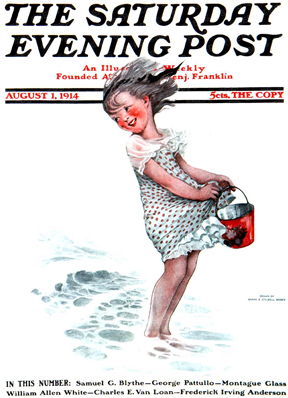
Sarah Stilwell-Weber
August 1, 1914
In the early 1900s, the Post covers were printed with a “duotone” two-color process: black and another color, usually red. This process is what makes the umbrella, flowers, and rosy cheeks on this little girl and her doll pop.

Sarah Stilwell-Weber
September 4, 1915
House cats are just too tame. This stylish young woman dared to make a leopard her pet.
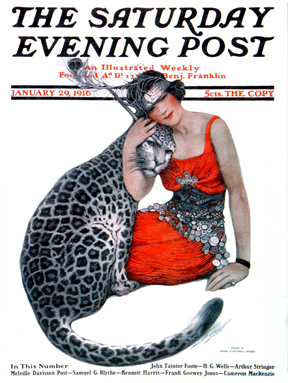
Sarah Stilwell-Weber
January 29, 1916
While many Post covers just show portraits of pretty young women, Stilwell-Weber adds life and movement to the traditional medium. This woman joins in the children’s fun after a stray snowball almost hits her.
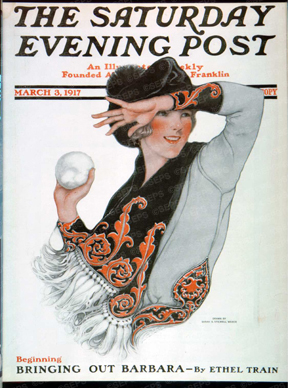
Sarah Stilwell-Weber
March 3, 1917
Rolling her way straight into your heart, this tot on wheels is ready for a hug.

Sarah Stilwell-Weber
July 12, 1919
With that mischievous grin, this little one could be gathering momentum to jump or complete a loop-de-loop over the tree branch.

Sarah Stiwell-Weber
August 15, 1925